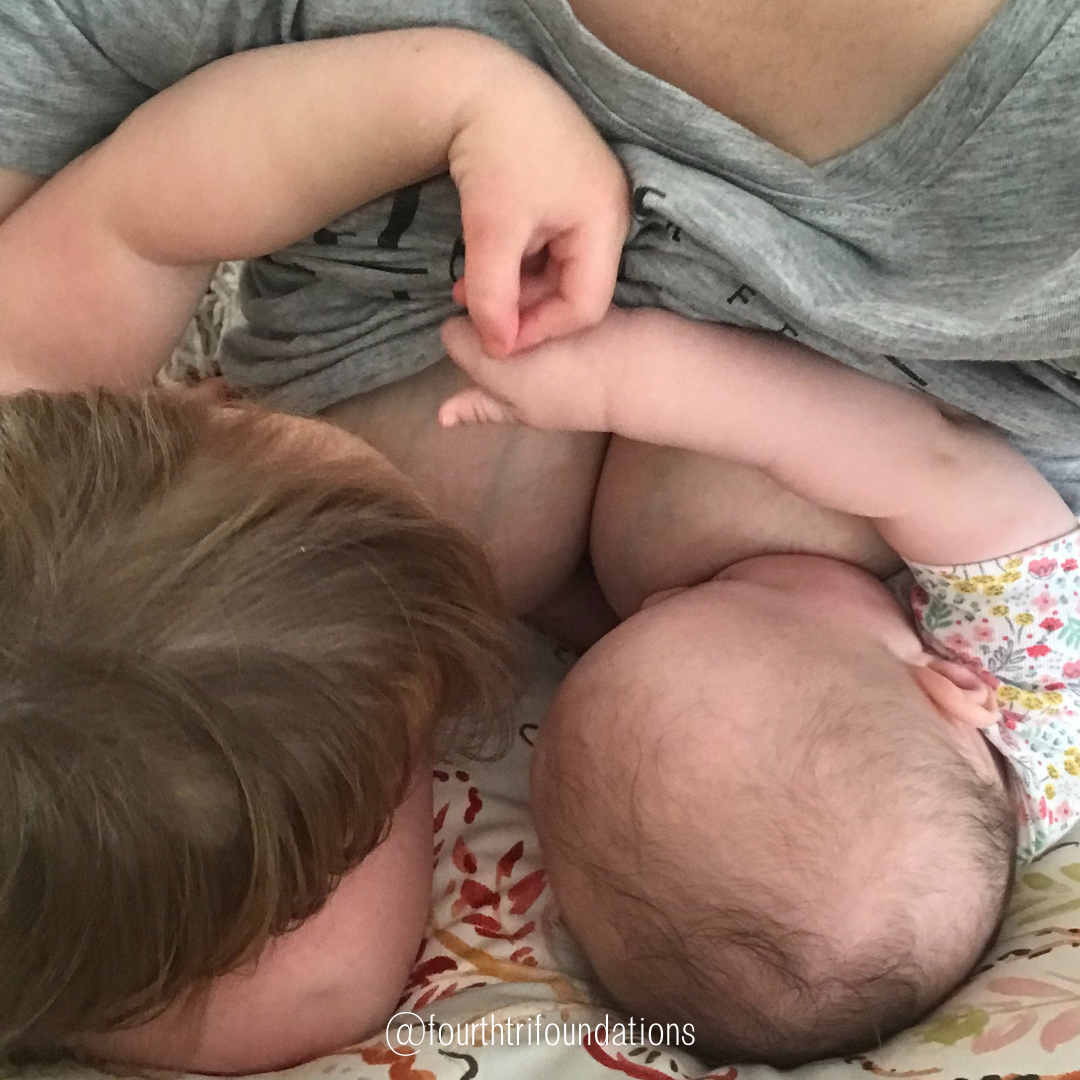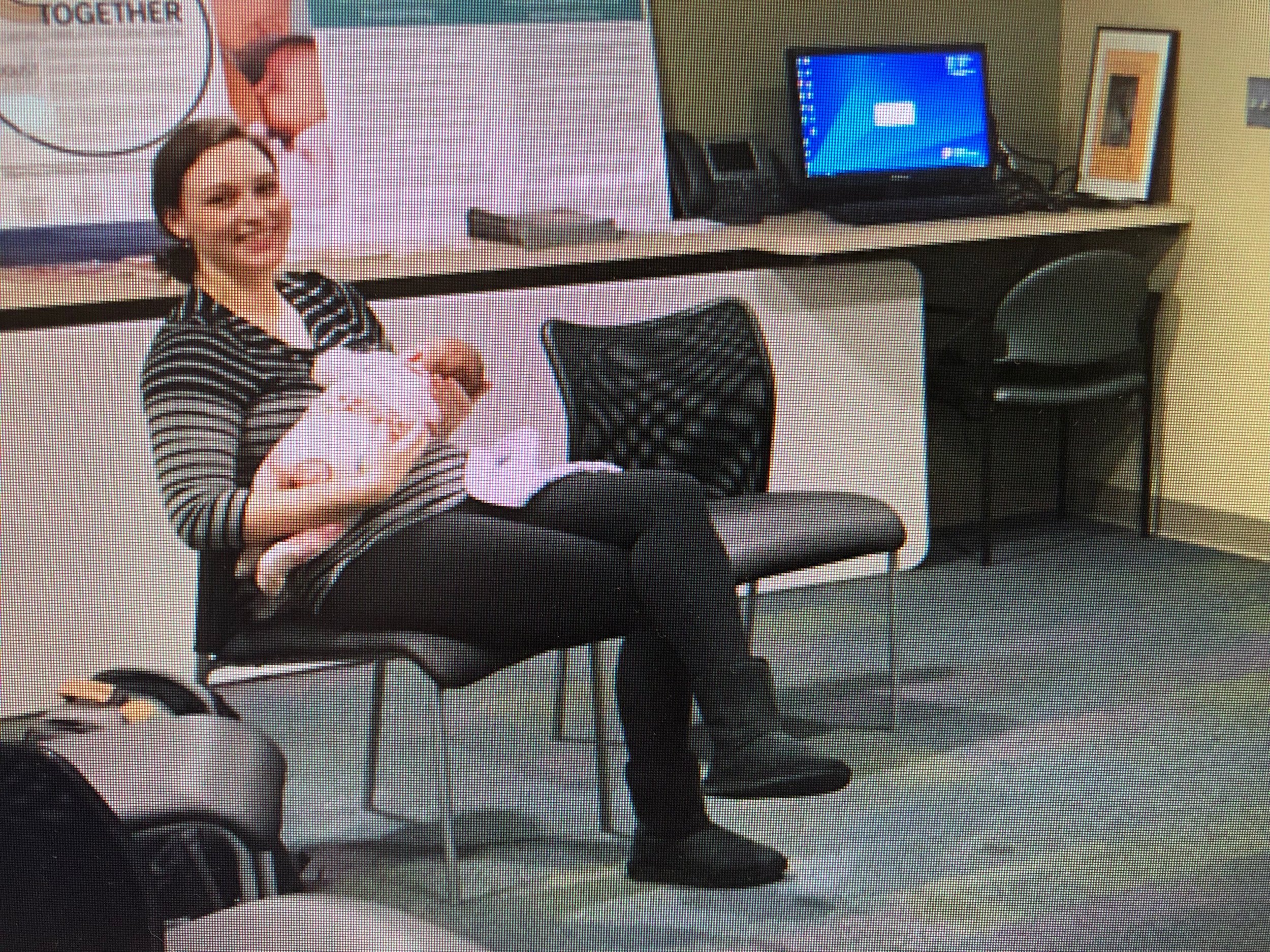Meg’s Breastfeeding Journey
Breastfeeding my daughters has been a long, winding journey with so many different chapters. While to some degree I had my own unique experience with each, because my lactation journey didn’t start and stop again between them, it feels much more fluid to me to recap it as one story.
I want to start by saying that this experience is mine and mine alone. And while it may appear victorious from the outside looking in, it was not all as wonderful as it seems. That’s not to say I don’t count it as a victory, because I certainly do. But I don’t tell it to make anybody feel as though they have to measure up. I hope that its worth reading for those of you who are looking for an example of a longer, more atypical experience with multiple babies that you just don’t find too many other places. I didn’t have many of those examples in my own life and figured it out as I went along, so I hope even one person reads this and finds the encouragement they need to keep going.
The First Timer
When I got pregnant with my first, I had been working on the mother baby unit at my current hospital for about six months. The comments of “oh so you’ve got it all figured out” started early and continued through all 40 weeks of pregnancy. I was expected to be cool, calm and collected for everything related to feeding my baby, basic care, and everything else that was part of my job. Even my husband echoed these “we’ve got it” vibes early on. And while there were some benefits to being in my line of work, like knowing who to call when I have trouble and having an arsenal of experienced friends and coworkers to help me, the list stopped there. I’d say I was reasonably confident going into this journey and knew I wanted to exclusively breastfeed, but I also wasn’t naïve to the amount of people (literally everyone) who struggled with feeding their baby.
Fast forward to the birth of my first daughter on December 23, 2019. You can read the whole birth story here! She was taken from my arms a few minutes after she was born and brought to the nursery with my husband by her side. She was LGA, or large for gestational age, at 8lbs 12oz and therefore was at risk for low blood sugar. While her blood sugar level was okay an hour after birth, it was on the lower side of normal and I knew the minute she came back to me I needed to try to feed her. Luckily that first latch was easy because she was eager and alert, but the subsequent latches in the hospital were awkward and difficult. I called my nurses to help me just as much as any other patient does in the beginning to help in getting the best latch I could. I didn’t get nearly as much help from the lactation consultants in the hospital as I’d hoped I would. Unfortunately, I think there was an assumption that I had less of an urgent need to see them because I “knew what to do”. So, I went home 48 hours later with a reasonably well-fed baby and some rudimentary understanding of how to do this and we figured it out.
As I mentioned earlier, my little December baby came two days before Christmas. Because I gave birth in the hospital I worked at, I knew that one of the lactation consultants I worked with had a weekly breastfeeding support group every Thursday evening. The week my daughter was born, Thursday ended up being December 26th. I decided to pack my baby into the car and let my mom drive us up to the hospital the day after Christmas because I was beginning to feel my milk come in and panicking about engorgement. When I got there, I was the only person who came for support group, so I basically got 90 minutes alone with an IBCLC (and dear friend) who doted on us, encouraged us endlessly, rubbed my shoulders, and taught me a million different tricks and positions for latching her.
I truly don’t think I’d be here telling this story of still breastfeeding nearly three years later if not for this day and this angel in my life. I didn’t give up then and there because I got what I needed that night. I went home, woke up the next morning with enormous rock-hard boobs, spoke to the same IBCLC on the phone a few more times to calm my anxiety, and we kept on going. By the end of my first week, I was showing off to my mom and close friends that I could lie on the couch, watch TV and nurse my baby at the same time!
A few days later in our journey we began using a nipple shield because my daughter was having a difficult time with my strong letdown and oversupply. We successfully used the shield until she was about 3 months old and then slowly weaned off it one feeding at a time when she was older, bigger, and able to handle a faster flow more easily. I dealt with one clog during that time, which is a known risk with using a shield, but I was able to work it out before it turned into mastitis, and it was a tool that worked well for us (when I didn’t drop it on the floor and lose it). 😊
Breastfeeding Through Pregnancy
Fast forward about seven months to when we found out we were pregnant with our second baby. I had been back to work for about three months as this point and was doing well pumping every three hours while at the hospital and bringing home more than enough to feed my baby throughout the 14-hour days I was gone. She took a bottle easily from her dad and her grandmother, so I didn’t have much to worry about in that department. I attribute that to starting early (around 5 weeks old) and often (about once a day) with the bottle prior to my return to work. When I found out I was pregnant, I became aware of the possibility of a drastic dip in supply due to hormone shifts. I didn’t realize this was a possibility when we decided to have our babies in close succession and as soon as I noticed this change in supply, my immediate feeling was one of overwhelming guilt. I had always planned to breastfeed for a year with my daughter and it was a shock that I had potentially jeopardized that in an instant by getting pregnant. While I know some people are lucky enough to get a return of supply after their first trimester, I wasn’t one of those lucky ones and it continued to dwindle.
I was determined to make it to a year with her anyway, so I continued through the pain of latching and pumping for eight more months at work until I left for maternity leave again. It was very difficult to separate my worth from my breastmilk during my pump sessions at work during this time. I decided to change my outlook on pump breaks from watching the ounces in the bottle to instead an opportunity to video chat with the baby, sit down, and have a snack. I’d cover the bottles with a swaddle blanket and try not to look too hard at the total I was bringing home at the end of the day. With the help of some donor milk from dear friends (one of which was Carly), we made it to a year and beyond. I tell more of this story on The New Little Life podcast you can listen to here.
Tandem Breastfeeding A Toddler and a Newborn
This part of the journey was another chapter I never planned for. I always expected my daughter to wean at some point during my pregnancy, either from a change in taste, the dip in supply, or both. That never happened and I had no desire to forcefully wean her. I attribute that mostly to the guilt I felt in denying her a robust supply for the second half of her first year. I felt as if I had to make it up to her by continuing for as long as I could. Perhaps that’s irrational, but that’s how I felt, so we kept going. As the end of my third trimester approached, I realized I’d better figure out a plan for tandem feeding. I’d never seen anybody do it in real life except for the patients I took care of with twin newborns in the hospital. The same lactation consultant who helped me in the early days after my first had tandem nursed her daughters many years prior, and she was the one I turned to for advice again. Everywhere I researched the subject told me to prioritize the newborn first, then let the toddler nurse second. I couldn’t see how that would work in a practical sense. How was I ever supposed to ask a 16-month-old child to sit and wait when the goods are out and flowing right in front of her? She was too little to understand that. When I asked my lactation consultant friend, she told me “You just do it”, and that’s the advice that stayed with me.
When my second daughter was born, I was able to redeem my lost golden hour and latch her immediately. You can read more of her birth story here. We did well with latching, but my “barely there” supply for my toddler was still a very overwhelming supply to a brand-new baby. We dealt with a tremendous amount of spit up in the first couple of days as a result. I found that tandem nursing was my saving grace for this situation because the toddler could take away some of that overwhelming volume from the baby. I found it easiest to latch the toddler on one side and the newborn on the other, or sometimes to even let the toddler go first until the letdown subsided, then replace her with the newborn on that side. Tandem feeding was also my secret weapon for preventing a lot of new sibling jealousy in that adjustment period.
They both continued to grow and thrive, and I never once worried about the baby getting enough. We’re still holding onto tandem nursing to this day – the “baby” is 15 months old and my oldest is now 31 months old. I’m proud of the journey we’ve had. And also much less apologetic about my unusual circumstances than I was in the beginning. There are people in my life who don’t support my breastfeeding journey, but I don’t really care much about their opinions anymore. I know it was the right choice for us. I can see it ending soon for at least one of the girls, and I know I’ll have mixed emotions about it when it’s finally over for both of them. Breastfeeding has been one of the hardest and most joyous aspects of my motherhood transition thus far. I’ll treasure the memories, photos and videos of it forever.
My Major Takeaways
Professional help from a lactation consultant early and often is essential to your success. Line this up before your baby is even born if you can. A supportive partner who was hands on with latches in those first few days and weeks, and then went on to handle all of the bottle-feeding logistics was really a game changer for me. Especially when I was worried about my supply during pregnancy, he never stopped telling me my pump haul from work was amazing and that he knew how hard I worked for it. Friends and other people I could look at for examples changed the course of our journey for the better. Having friends breastfeeding and pumping along side me and role models that had come before me gave me something to look toward achieving when I couldn’t picture my own journey before it unfolded. Finally, don’t forget to document the journey. I realized quite late that I don’t have all that many photos of my girls at the breast either individually or together. I’ve started taking them more recently, but I don’t have much to remember our early days by. Let someone take the unflattering photo. Or just put your phone down for a feeding now and then and feel the weight of their body against you. Take a whiff of their little head. Play with their fingers. Never let yourself forget all the little details of that time together, whether it lasted hours or years. It’s all special and important. All of this can be summed up by saying that it takes a village to raise a baby, but it also takes a village to raise a mother. Find the people around you, whether they’re friends, family, hired help, medical professionals, or all the above who make you feel seen, loved, and supported in the journey you’re taking.












